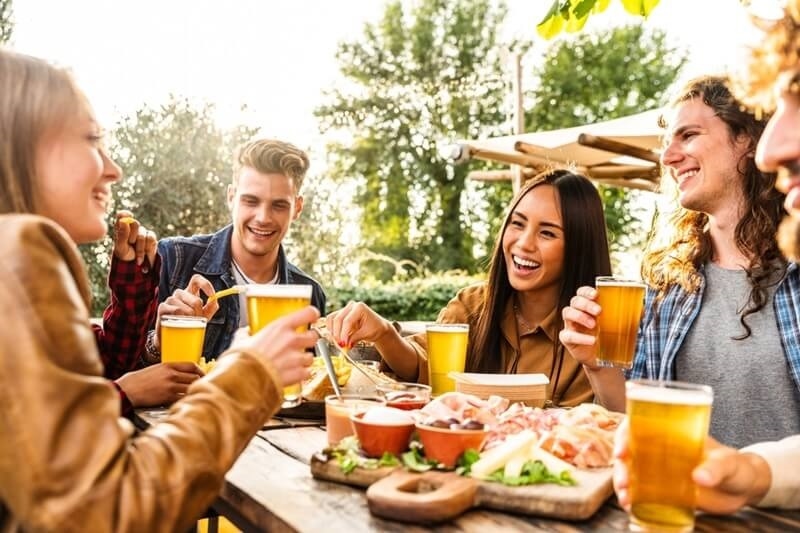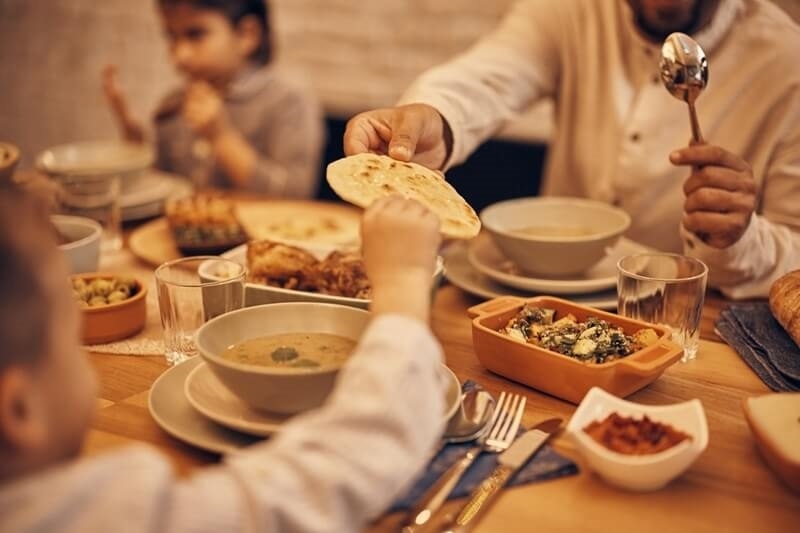
Food is universal—but how we eat, share, and experience it is informed by centuries of geography, belief, and culture. Everywhere around the world, a humble meal is an expression of profound values, history, and identity. Whether on the noisy street food stalls of Bangkok or the whispering tea ceremonies of Kyoto, the manner in which we eat is a reflection of who we are and where we belong.
This blog ventures into cultural table dining habits worldwide—a most intriguing odyssey into the way diverse societies perceive food, hospitality, and actually consuming food. If you're a traveler, host foreign guests, or merely enjoy experiencing culture through dining, knowing about table manners abroad, food rituals and traditions, mealtime etiquette, global food experiences, and more is an integral component of participating in rich, respectful cross-cultural culinary experiences.
Meals in the United States tend to be quick, informal, and practical. But in much of the rest of the world, meals are highly ritualistic. Meals can be strictly timed, eaten communally, or served with formal seating plans. These cross-cultural dining practices everywhere tend to be handed down from generation to generation and based on religion, family status, or symbolism.
To an American palate, eating with hands or sitting on the floor may feel unfamiliar, but these experiences offer a deeper understanding of a community’s way of life. It’s more than etiquette—it’s about empathy and appreciation.

Here’s a glimpse of it.
Japan's table manners are a reflection of its larger cultural emphasis on respect and discipline. A good place to start would be to say Itadakimasu when beginning a meal, and Gochisousama deshita when finishing one. Chopstick etiquette is strict—never stick them upright in rice or pass food from chopstick to chopstick, both of which recall funeral practices.
Meals are beautifully presented, and silence is not only acceptable but often encouraged. These food rituals and traditions reflect the Japanese value of mindfulness and order in every aspect of life.
Food is spiritual in India. Most families practice Ayurveda or cook according to religious customs. It's not rude to eat with your hands but rather thought to bridge the body, soul, and food. Banana leaves or metal thalis are used to serve food, with an emphasis on variety and balance.
Hospitality is from God—guests are treated with the utmost respect, and feeding people is seen as a good deed. These kinds of cultural dining etiquette worldwide show how food is employed as a symbol for benevolence and spiritual nourishment.
Middle Eastern cultures prioritize sharing. Meals are often served family-style, and foods such as hummus, kebabs, and rice are put out in plenty. In Arab cultures, it is traditional to use the right hand when eating and often sitting on cushions.
Serving guests before oneself, not allowing plates to be left empty, and serving coffee or tea with meals are all examples of the lush food rituals and traditions of the area. To break bread with someone here is to indicate trust and kinship, a value deeply ingrained in their mealtime manners.
Throughout Africa, meals are commonly a shared experience, based on unity. In Ethiopia, injera (a sourdough bread) acts both as a plate and spoon, used to pick up generously spiced stews. Meals are served from a communal plate, which emphasizes oneness and equality.
In West Africa, foods such as jollof rice or egusi soup can be eaten by hand, sometimes while tales are told and oral histories passed on. These cultural dining customs around the world highlight how meals are about more than food—they are about building relationships and maintaining traditions.
Here’s a glimpse of it.
In France, dining is approached with the same respect as fine art. Meals are unhurried and often include multiple courses. Bread is placed directly on the table, not the plate. Cutting salad with a knife is frowned upon. These details form part of the intricate mealtime etiquette taught from a young age.
France’s dedication to food isn’t just about taste—it’s about the ritual. From cheese courses to wine pairings, every element is thoughtfully considered. These global food experiences reinforce the idea that eating is to be savored, not rushed.
Italian meals are loud, long, and filled with love. Family is at the heart of every dining experience. While there are unwritten rules—no cappuccino after noon, pasta and salad are not served together, and bread is used to clean the plate—there’s also immense warmth and welcome.
Sharing is central to Italian food rituals and traditions, and so is storytelling. From Sunday lunches to big holiday feasts, these meals celebrate life, lineage, and laughter.
In countries like Mexico, Brazil, and Peru, food is deeply tied to cultural identity and festivity. In Mexico, meals may begin with a heartfelt buen provecho, while in Brazil, barbecues (churrascos) can last an entire day.
Street food plays a vital role, offering authentic global food experiences to locals and visitors alike. Corn, beans, rice, and fresh vegetables form the base of most meals, while vibrant spices and techniques reflect the region's rich history of fusion and adaptation. These cultural dining customs around the world reveal a culture that celebrates color, flavor, and community.
In countries like Sweden, Norway, and Denmark, food is simple but intentional. The concept of fika in Sweden—pausing for coffee and conversation—is as much a social custom as it is a culinary one. Meals are planned around sustainability, local produce, and seasonal ingredients.
Portions are smaller, and presentation is clean and minimalist. Though not overly formal, mealtime etiquette here still values punctuality, no food waste, and considerate conversation. These global food experiences teach the value of simplicity, balance, and ecological mindfulness.
While the US doesn’t have a singular food identity, it thrives on diversity. From Thanksgiving turkeys to New Orleans gumbo, American cuisine reflects the cultural mosaic of its people.
With immigrants from across the globe, the US offers a microcosm of cultural dining customs around the world—from chopsticks in Chinese restaurants to Ethiopian injera platters, from sushi counters to taco trucks.
However, dining in the US is often less ritualistic and more convenience-driven. Still, as interest in authenticity and wellness grows, Americans are increasingly embracing food rituals and traditions that go beyond fast food and focus on mindfulness, sustainability, and community.
As global citizens or tourists, it is essential to do more than merely sample novel foods. Knowing table manners outside of one's home country prevents awkward situations, and a gesture to accept mealtime rules demonstrates respect for the host culture.
Watching food rituals and customs, whether sitting and waiting for elders to be served first in some areas of Asia or standing while sipping tea in Morocco, can unlock doors to richer, more profound international food experiences. Table manners are seldom spoken, but they tell us a lot. Understanding how people eat, we also come to understand how they love, share, and come together.
Food has been the universal language, yet as with any language, its dialects are diverse across borders. A tour of cultural table manners around the globe is more than an exercise in tutelage, it's an invitation to experience the world as another sees it.
From sophisticated European banquets and religious African celebrations to the silence charged with manners of the Japanese dinner and the passion-spiced frenzy of the Latin American fiesta, the globe has a rich platter of traditions to delight in.
This content was created by AI